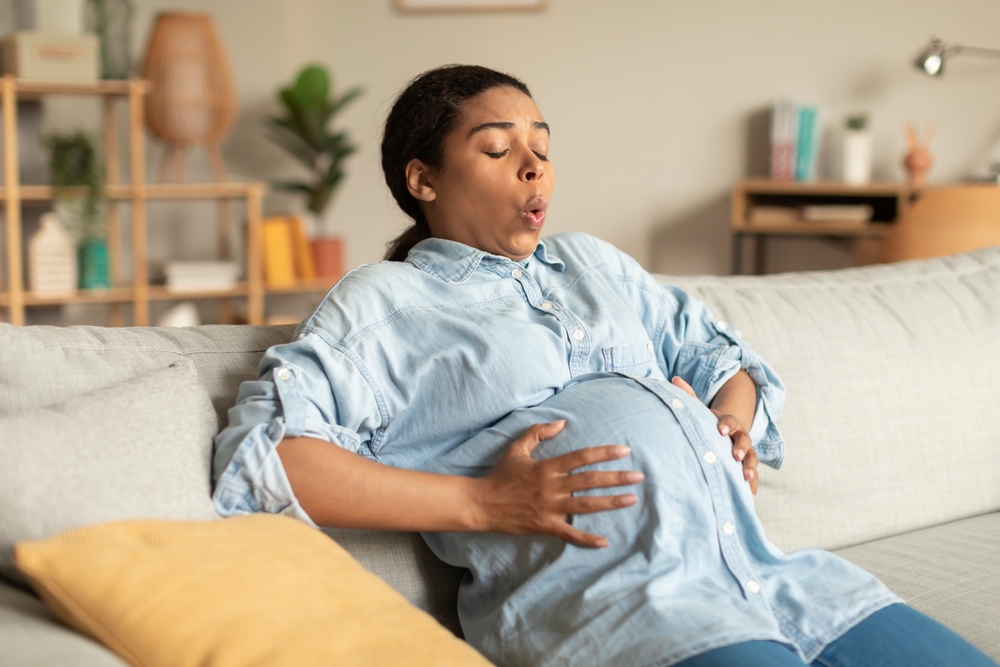Feeling uncomfortable muscle contractions in your third trimester?
You may be experiencing Braxton Hicks.
For many women, particularly those pregnant for the first time, those contractions can be very alarming. While Braxton Hicks contractions certainly mimic some of the characteristics of true labor, understanding what they are and why they occur will set your mind at ease.
At South Miami OB-GYN Associates, we want to help educate and support you in every way possible. If you are pregnant or planning to become pregnant, schedule an appointment with our board-certified obstetricians in South Miami or Downtown Doral today.
What Are Braxton Hicks Contractions?
Braxton Hicks contractions are named after John Braxton Hicks, the English physician who first described them in the 19th century.
Also known as “false labor,” Braxton Hicks are sporadic uterine contractions that occur during pregnancy. They are typically irregular and do not lead to your water breaking, labor, or childbirth. Instead, the contractions are the body’s way of preparing for true labor and can start as early as the second trimester of pregnancy. Most women, however, experience these contractions in the third trimester.
What Does Braxton Hicks Feel Like?

Braxton Hicks often feel like a tightening or hardening of the uterus, like the sensation of a muscle or menstrual cramp. However, unlike true labor contractions, Braxton Hicks contractions do not usually become progressively stronger or closer together over time. They also tend to be less painful compared to real labor contractions.
Braxton Hicks contractions are considered a normal part of pregnancy and are usually harmless. However, if you are experiencing contractions and are uncertain whether they are Braxton Hicks or true labor, it is important to contact your OB-GYN for evaluation and guidance.
Braxton Hicks Symptoms
Braxton Hicks symptoms can vary. There are some common tell-tale signs to watch for that indicate you are experiencing Braxton Hicks contractions.
- Irregular timing: Unlike true labor contractions, which tend to become progressively stronger, longer, and closer together over time, Braxton Hicks contractions are usually irregular. They may occur sporadically throughout the day or week with no consistent pattern.
- Lack of increasing intensity: While they can be uncomfortable or mildly painful, Braxton Hicks contractions generally do not intensify over time, like with true labor contractions.
- Tightening of the uterus: Braxton Hicks contractions often cause a tightening or hardening sensation in the uterus. This may be felt in the lower abdomen, and the abdomen may become visibly firm to the touch during a contraction.
- Mild pain or discomfort: Braxton Hicks contractions may cause discomfort or mild pain, but they are generally not as intense or severe as true labor contractions. The pain may be described as a cramping sensation, similar to menstrual cramps.
- No other signs of labor: Braxton Hicks contractions do not typically cause other signs of labor, such as cervical dilation or changes in the mucus plug.
What Commonly Triggers Braxton Hicks Contractions?
While Braxton Hicks contractions can be difficult to predict, there are a few known triggers that increase a woman’s likelihood of experiencing them.
Four Known Triggers for Braxton Hicks Contractions:
- Exercise or other strenuous activity
- Sex
- Dehydration
- A full bladder
Evaluating Braxton Hicks Contractions
If you’ve never experienced Braxton Hicks before, it can be difficult—and stressful—to discern what exactly is going on. To accurately assess whether you are experiencing Braxton Hicks contractions or not, there are some questions you can ask yourself:
- How long are the contractions? If they are varied in timing and not increasing in strength or frequency, you are probably not in labor.
- Do the contractions change when you move? If moving or changing positions while lying down alleviates the contractions, then it is not true labor contractions.
- How often are the contractions occurring? Braxton Hicks are irregular and do not get progressively stronger and closer together, such as with true labor contractions.
- Where are the contractions felt? Braxton Hicks contractions are typically felt in one specific area or in the front of the abdomen.
Managing Braxton Hicks contractions
If you experience Braxton Hicks contractions, there are several things you can do to mitigate any discomfort:
- Stay hydrated: Dehydration can sometimes trigger or exacerbate Braxton Hicks contractions. Drinking plenty of water and staying hydrated may help to reduce the frequency and intensity of contractions.
- Change positions: Changing positions or activities may help to alleviate Braxton Hicks contractions. If you have been sitting or lying down for a while, try standing up and moving around, or vice versa. Gentle stretching or relaxation techniques, such as taking a warm bath or practicing deep breathing, may also help.
- Rest: Fatigue or overexertion can sometimes trigger Braxton Hicks contractions. If you have been physically active, try resting and relaxing to see if the contractions subside.
- Empty your bladder: A full bladder can sometimes irritate the uterus and trigger contractions. If you are experiencing Braxton Hicks contractions, try emptying your bladder to see if it helps alleviate them.
- Monitor contractions: Keep track of the frequency, duration, and intensity of the contractions. If they become regular, increasingly intense, or are accompanied by true signs of labor, contact your OB-GYN immediately.
Remember, while Braxton Hicks contractions are usually harmless, it is always best to consult with your healthcare provider for proper evaluation and guidance to ensure the health and well-being of both you and your baby during pregnancy.
When to Call Your OB-GYN

Braxton Hicks are called “false labor” because the symptoms can be easily mistaken for true labor. Often, women unfamiliar with Braxton Hicks contractions seek unnecessary medical attention. It is for this reason that understanding Braxton Hicks symptoms is important. However, it is also important to know when contacting your healthcare provider is necessary.
Call your doctor immediately if you experience any of the following:
- You are leaking fluid from the vagina (indicating your water breaking)
- You are experiencing vaginal bleeding
- You are experiencing contractions so intense that you are unable to walk
- You are experiencing contractions occurring every 5 minutes for an hour
What to Do Next
Our obstetricians at South Miami OB-GYN have helped dozens of women through their pregnancies. From a simple pregnancy test to prenatal care, screenings, education, and management of high-risk pregnancies and complicated deliveries, our experts are here to help you every step of the way.
Schedule your OB-GYN visits online at either our Downtown Doral or South Miami practices. or call 305.665.1133.
Disclaimer: The content provided in our blogs or linked materials is not intended and should not be construed as medical advice, nor is the information a substitute for professional medical expertise or treatment.




